Kerrytown Concert House’s “Winter Meditation” offers austere ambiance from Kirsten Lund, Ann and Fred Ringia
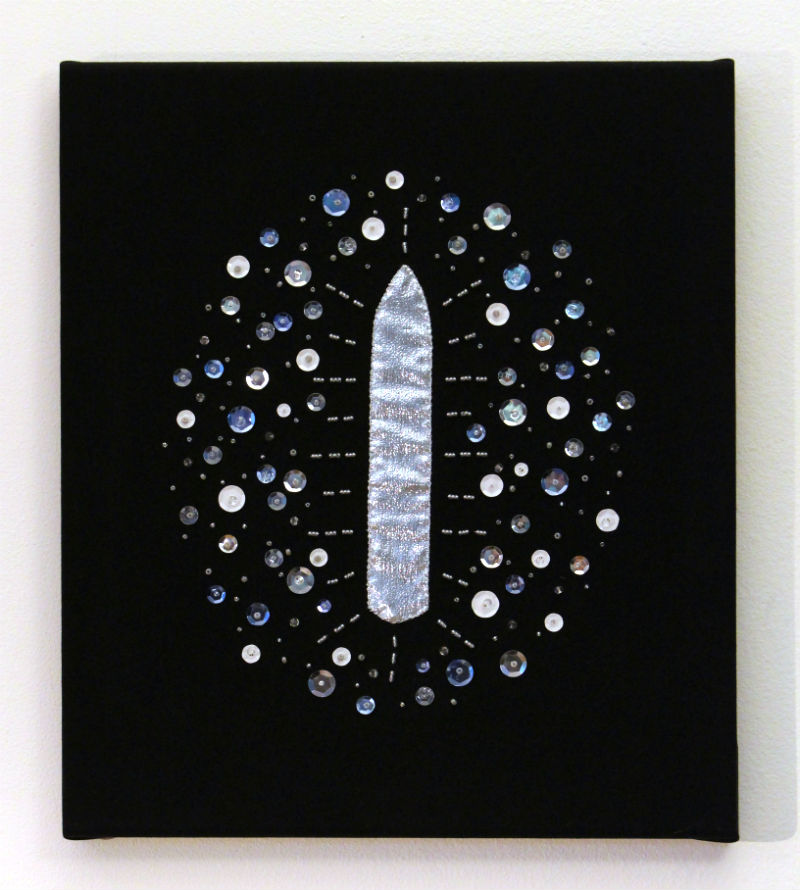
It may initially seem surprising that winter can inspire artists. One would think the nippy climate would discourage creativity.
Yet it’s also fair to say that an austere contemplation can foster art during this most challenging time of the year. Given the ambiance, temperature, and the chilly weather conditions, it’s little wonder that mediation would be a key factor for many artists so inclined.
As the Kerrytown Concert House’s Winter Meditation exhibition shows us, three local artists -- textile artist Kirsten Lund and husband-wife photographers Ann and Fred Ringia -- have in particular found inspiration in this most meditative of seasons.
Plugged In: UMMA's "Art in the Age of the Internet, 1989 to Today" examines creativity in the Digital Age

The traveling exhibition Art in the Age of the Internet, 1989 to Today is on loan to UMMA from the Institute of Contemporary Art of Boston, curated by Eva Respini and Barbara Lee (chief curators) with Jeffrey De Blois (assistant curator). The exhibition premiered in Boston on February 7, 2018, and will next travel to New Orleans Museum of Art in mid-April 2019.
The significance of technology’s impact on lived experience is noted the exhibition announcement on UMMA’s website, stating: “The internet has changed every aspect of contemporary life -- from how we interact with each other to how we work and play. Art in the Age of the Internet, 1989 to Today examines the radical impact of internet culture on visual art since the invention of the web in 1989. This exhibition presents more than forty works across a variety of media -- painting, performance, photography, sculpture, video, and web-based projects.”
Some of the influential artists featured in the gallery are Cory Arcangel, Judith Barry, Juliana Huxtable, Pierre Huyghe, Josh Kline, Laura Owens, Trevor Paglen, Seth Price, Cindy Sherman, Frances Stark, and Martine Syms. Many of the artists have worked with ever-changing technology for decades, but curators cite the year 1989 as a marker for the current global interconnectedness we experience as a result of new technologies. In addition, 1989 was the year of the first satellite that allows us to have the now-ubiquitous GPS, the year the World Wide Web was invented, the year the Berlin Wall came down, and protests in Tiananmen Square. Since social movements and identity politics have become more visible and accessible than ever before.
"Works in Progress" is a celebration of beauty and chaos at Ann Arbor Art Center

We live in a world of things. Each chair, cup, table, door, and car in our built environment is the product of human ingenuity, from concept to execution. Works in Progress, an exhibit on view now at the Ann Arbor Art Center, celebrates the creativity of 24 international and domestic designers, at varying stages in their careers, who bring functional works to life through fashion, graphic design, furniture, architecture, and industrial design.
Many of the products and designs on display feature high tech materials and methods not usually associated with what we normally think of as “craft.” The centerpiece for this non-analog approach is You Are the Ocean, a video installation by Ozge Smanci and Gabriel Caniglia, which takes up about a third of the entry room in Gallery 117. It’s not an object at all, but documentation of a computer-assisted visualization of how the mind can alter an image via computer, unmediated by the human hand or real-world material. Using the Unity Game Engine, the designers wrote code that creates a synthesized, uninhabited, and turbulent seascape. Clouds roll and waves crest in response to the subject’s brain waves in various states of concentration or relaxation. The resulting scene is both bleak and beautiful, exhilarating and disturbing. I can imagine that this is the kind of art our cyborg descendants will find beautiful, and it gave me a profound sense of my own obsolescence.
Be Here "YpsiNow": Riverside Arts Center's "Intersections" exhibit presents a slice of the city

Riverside Arts Center's YpsiNow: Intersections asks this question in its announcement: “What is Ypsi, right now? Its paths, connections, struggles, and joy all interweaving to create the tapestry of Ypsilanti.”
For this second annual iteration of the exhibit -- juried by RckBny, Gary Horton, and Rey Jeong -- the question is answered by Ypsilanti High School students and adult residents working in a variety of media.
The high school students’ photography, collage, paint, ink, and written-word works are clustered on one wall, illustrating the diversity of approach among the teenagers, which is reflective of the overall approach to the exhibition. The adult Ypsilanti artists fill the rest of the gallery with sculptures, installations, and 2D works.
UMMA & Vault of Midnight team up for comic art in the "Age of the Internet"

UMMA's exhibit Art in the Age of the Internet, 1989 to Today tracks the impact of the web on visual art over the past 30 years. While comic books aren't represented in the exhibit, it is a visual art form that has been radically modified over the past three decades by digital culture.
Inspired by the exhibit, UMMA and Vault of Midnight - Ann Arbor are combining forces for a new comic book club: "The Age of the Internet in Comic Books and Graphic Novels." Vault of Midnight will host the meetups once a month in its Ultralounge, all of which are on a Sunday at 2 pm.
The series will include the following titles:
Penny Stamps Distinguished Speaker Series Winter 2019 lineup
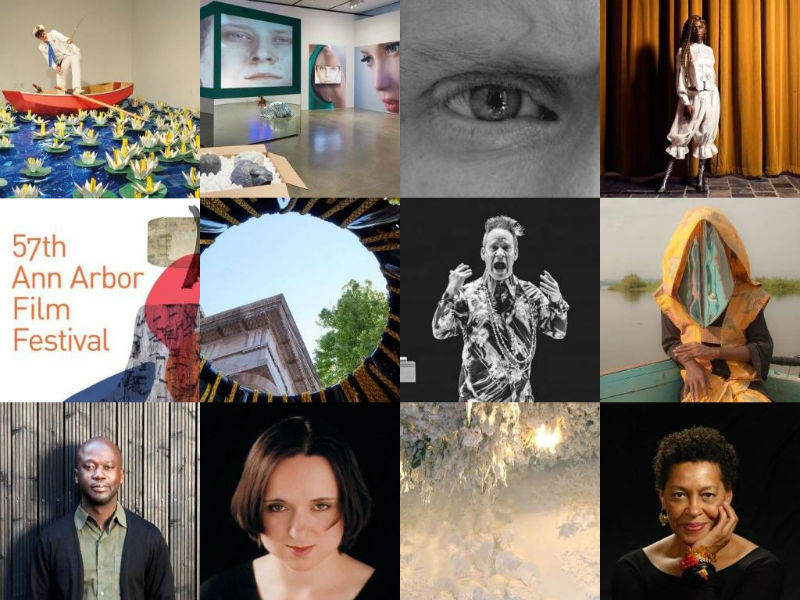
U-M alumna Penny W. Stamps died from leukemia on Dec. 18, 2018, but her dedication to bringing arts and ideas to Ann Arbor community continues with the school and speaker series named in her honor.
The winter lineup of U-M Stamps School of Art & Design's Penny Stamps Distinguished Speaker Series was announced Jan. 11 with 12 events, primarily at the Michigan Theater and many in conjunction with other performances and events at the university and in the community.
I Want to Believe: "Proof: The Ryoichi Excavations" at UMMA asks us to suspend belief
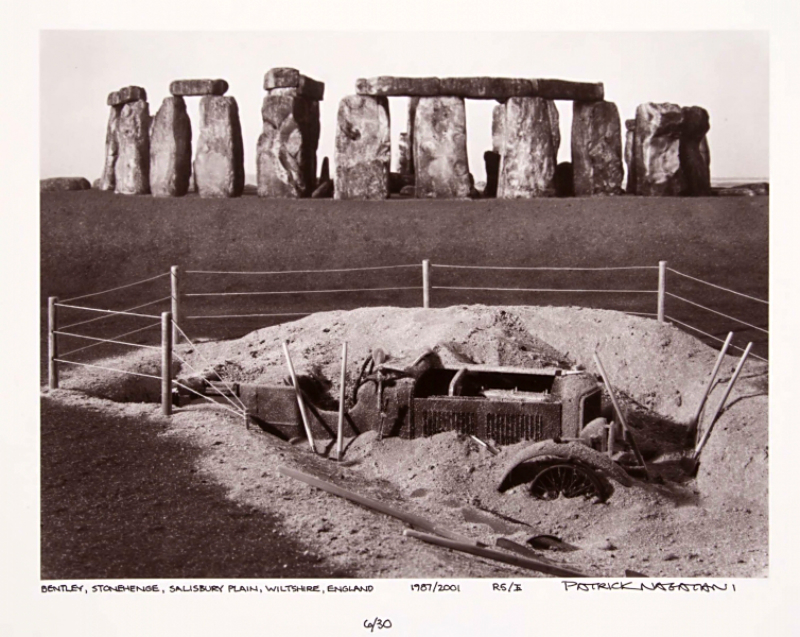
Proof: The Ryoichi Excavations presents artist Patrick Nagatani’s series of staged, minutely detailed photographs of fictional archeological excavations. The University of Michigan University of Art's exhibition announcement summarizes the content of the exhibit, in which Nagatani uses photographs to present “artifacts” from the life of Nagatani’s alter ego, an explorer named Ryoichi:
Nagatani presents a narrative of Ryoichi’s archeological work, supported by images of excavation sites, unearthed artifacts, and Ryoichi’s own journal pages. According to the photographs, Ryoichi discovered evidence of an automobile culture buried at sites across several continents: Stonehenge, the Grand Canyon, and a necropolis in China.
The photographs represent the various facets of the Ryoichi Excavations project, with photographs of journal pages in Japanese, video stills, photographic representations of the excavations, and curatorial wall text explaining the contents of the images. Some of these are displayed in standing glass cases in addition to the gallery walls. Nagatani’s dedication to creating a playful illusion of an archaeological project questions the assumption that photography is a means to convey unaltered, factual images.
In a Mellow Tone: Earthly elements define Candace Compton Pappas' paintings at Cafe Zola
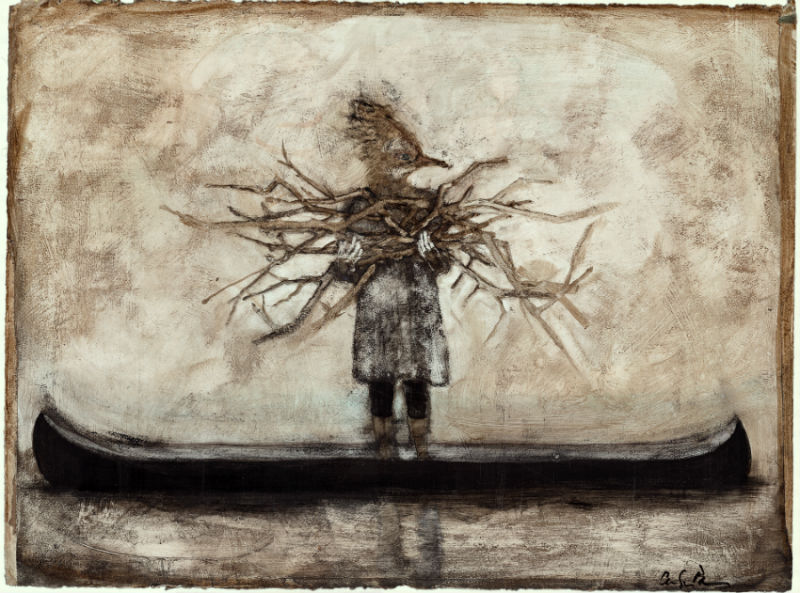
Candace Compton Pappas' paintings evoke the dirt at dusk, the soil at sunset, and trees in the bleak mid-winter.
You can view these earthen works at Ann Arbor's Cafe Zola through the end of December, but you might have to lean over someone scarfing some smoked salmon bruschetta for a closer look.
It can be tricky to navigate this frequently full restaurant to get a close view of Pappas' paintings and truly appreciate their moody evocations, but she doesn't seem worried.
"Customers can figure out how to view the work amidst the coming and going of diners," said the artist, who lives in Chelsea, Michigan. "Cafe Zola is open from 7 am to 10 pm every day -- so lots of quiet times to enjoy without the high volume of lunch or dinner."
Plus, it's not the first time Pappas has shown her work at the 112 W. Washington St. restaurant.
Dennis Jones’ “Candyland” is a graffiti-inspired exploration of post-painterly art
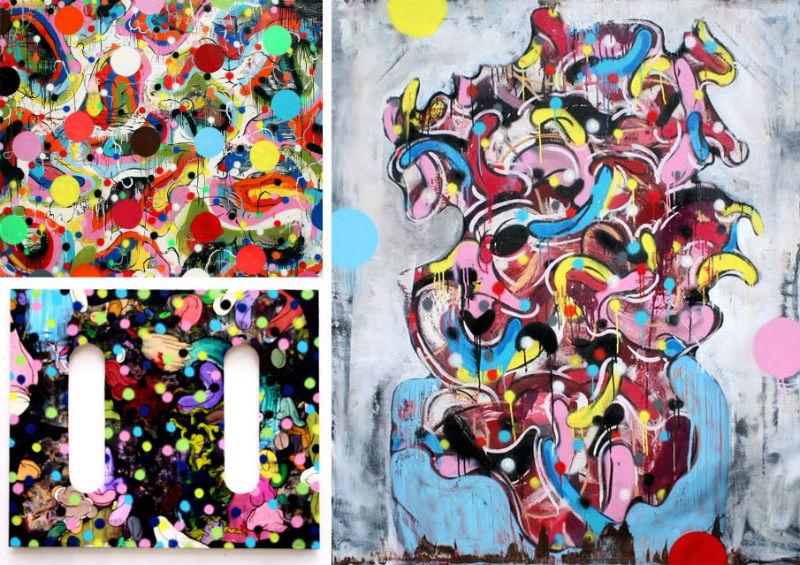
Dennis Jones’ Candyland at the University of Michigan North Campus Research Complex Rotunda is for those who like to have a little contact high to go along with their art.
A 2014-2018 14 masterwork concoction crafted by this adjunct faculty at Detroit’s College for Creative Studies, Candyland is a full-throttled exploration of post-painterly art whose graffiti-inspired abstraction is more than enough to push your glucose level beyond its prescribed limit.
96th All Media Exhibition at the Ann Arbor Art Center
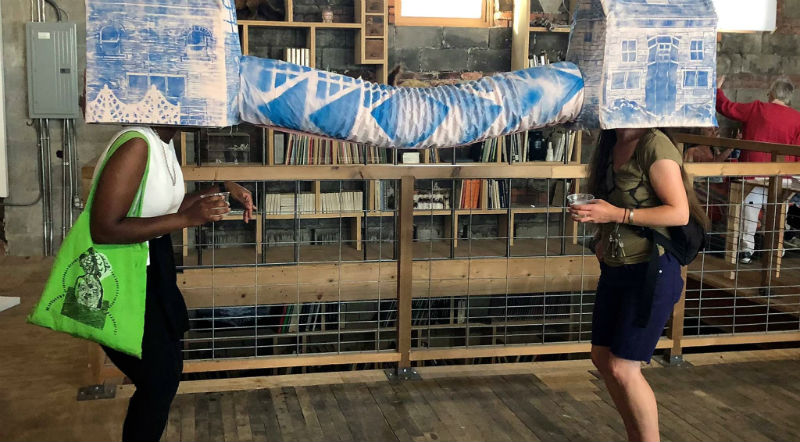
Sarah Rose Sharp is an accomplished artist in many areas: she writes about art and culture, lectures at a half dozen colleges and universities, shows her own work in places like New York, Seattle, and the Detroit Institute of Arts, and most recently she curated the 96th All Media Exhibition at the Ann Arbor Art Center.
“This was an open call, so artists submit their work and my job as the juror is to choose which work gets into the show,” Sharp explains. “We received around 700 submissions, which were then culled down to 45. … A very challenging undertaking!”


































